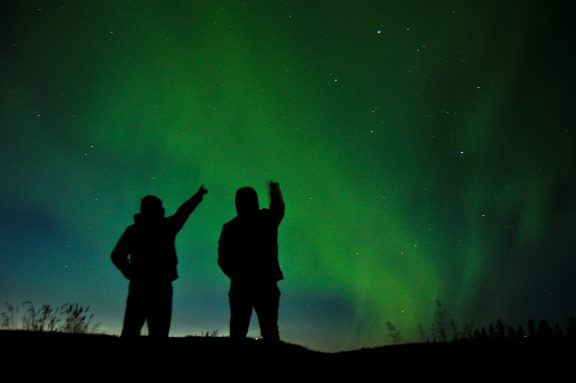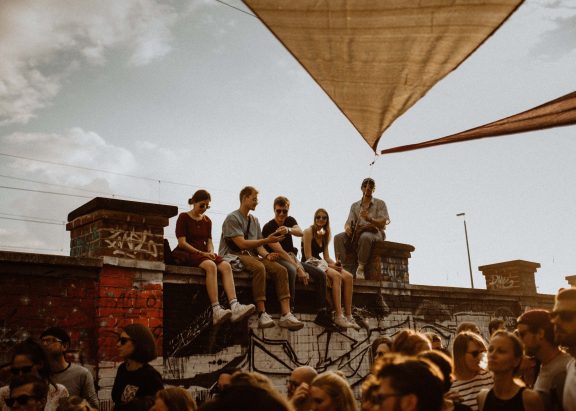
In this article:
This is the best year for observing the Northern Lights, and there are several places in Quebec to enjoy them – a few of which are near our amazing hostels. Stargazing, on the other hand, can be done from just about anywhere in Quebec, as long as the conditions are in your favour.
Let’s talk about how to stargaze, and the best ways to experience the Northern Lights in Quebec.
What are the Northern Lights?
Also known as the aurora borealis, the Northern Lights are ribbons of light that seem to dance across the sky. The name aurora borealis dates back to the 17th-century when Galileo saw purple and green strips of light stretched across the sky. In Southwestern France, however, there are 30,000 year old finger tracings that look a lot like the aurora.

In a nutshell, coronal mass ejections from the sun’s magnetic field travels 93 million miles across the universe and slams into earth’s magnetic field. The particles are accelerated up and down the magnetic field from North to South, smacking into oxygen and nitrogen atoms resulting in ribbons of light.
Observing the Northern Lights in Quebec
The best time of year to see the Northern Lights in Quebec is September to April, between 10 pm and 3 am.


In Gaspé, La Haute-Gaspésie is the best spot for catching a glimpse of the aurora as the light pollution is very low. Added bonus, it’s less than 30 minutes from Auberge Festive Sea Shack. The lights can also be seen in Charlevoix, around La Malbaie near La Secousse hostel, The Saguenay Fjord, and Tadoussac. This website is a good resource for whether Northern Lights are likely to appear. The NOAA Space Weather Predictor website is also an excellent resource.
Weather Tips for Stargazing and Northern Lights
Clear skies are best for spectacular stargazing and photographing Northern Lights, but cloud cover can work in your favour if they are moving enough to allow the lights to poke through. Use weather apps like AccuWeather to figure out where to go for optimal weather conditions. Apps like Star Walk 2 and Aurora Forecast are FREE apps that help track the Northern Lights and identify stars, constellations, and comets.
How to Photograph the Northern Lights and Starry Nights
The first rule for photographing the Northern Lights and the stars is to leave the light pollution of urban centres behind. Packing a tripod is highly recommended, but you can also use flat rocks, tree stumps and vehicles to keep your camera steady. If there is a lake or river nearby, try some reflective shots.
If you have a wide lens, use it! The lights stretch far and you want to capture as much of it as possible. Once your camera is set up, use your smartphone flashlight to light the foreground. The darker it is outside, the brighter the lights will be. When they disappear, don’t pack up immediately, sometimes they come back in an hour or so.

Try a setting of f2.8 with an ISO of 1000 to 2000. Long exposure (10-15 seconds) photos often yield a brighter display than what you see with the naked eye.


Everything You Need for Stargazing and Observing the Northern Lights
As mentioned above, the less light pollution the better when stargazing and looking for the Northern Lights.
- Once you arrive at your destination, turn off your car lights and avoid using your smartphone as this can diminish your ability to see the aurora.
- Night photography takes time, so bring something to sit on, and dress warmly – it can get cold after 10 pm in Quebec.
- A sturdy tripod is a necessity, and make sure your camera batteries are fully charged.
- Take test shots, adjust your settings, and have fun.
Of course, you can also ditch the camera, sit in the dark surrounded by nature, and enjoy the magic of science for a few hours.




 Nomad Junkies
Nomad Junkies


